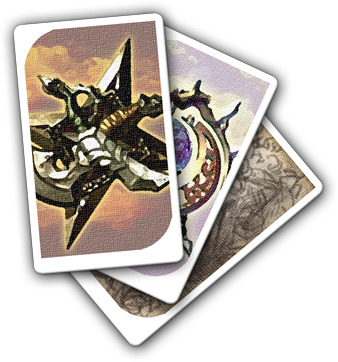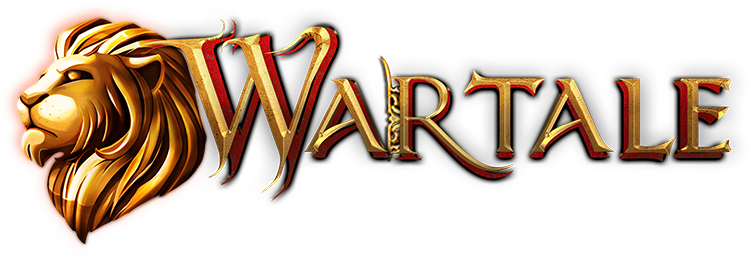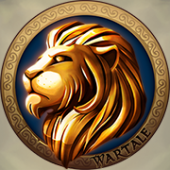
Celestial Age
At the beginning and end of time and space, there existed a transcendent being of unimaginable power. This being created and destroyed countless worlds over an infinite period. Eventually, it created six interconnected worlds named Pentana, Varuna, Doruna, Satica, Merkava, and Efria, assigning gods to each.
Efria initially was a chaotic blend of sky, earth, light, and darkness. Ten powerful gods appeared and used their abilities to bring order. They shaped nature and life, managing everything harmoniously, resulting in the creation of Efria.
The gods were pleased with their work, except for Midranda. Although Midranda possessed the greatest power and knowledge among the gods, his arrogance made him desire control over the world. He began to destroy and reshape what the other gods had created. Despite their warnings, Midranda's actions worsened, leading the gods to decide to stop him. Anticipating this, Midranda had secretly amassed followers and monsters for battle.
A war ensued, with Midranda defeating the gods and becoming the world's ruler. His oppressive reign led to chaos and despair. Eventually, the gods launched a relentless counterattack, defeating Midranda, who fled into the darkness with his followers. Future generations called him Igolanos, meaning "hidden in darkness".
The nine gods then decided to govern the world together and create intelligent beings like themselves. Mythos, one of the gods, breathed life into these creations, calling them humans and giving them wisdom, knowledge, and tools to thrive on the land. The humans, calling themselves Nurns, were initially few in number but gradually spread across the continent, forming villages, cities, and nations. Their civilization advanced to the point where they controlled the skies, seas, and land. However, this power led them to desire to challenge the gods.
Immemorial Age
In the beginning, the gods imparted knowledge and skills to the Nurns people, hoping they would live virtuously. However, as Nurn civilization progressed, they grew arrogant and began Seeking to ascend to godhood themselves, the Nurns gathered their technological prowess to create a formidable weapon capable of challenging the deities. But the gods, aware of their intentions, struck preemptively and thwarted the Nurns' plans before they could be executed.
The gods decided to punish the Nurns for their arrogance. Initially, they planned to annihilate the unrepentant, yet some gods argued to spare those who remained faithful. Therefore, the gods destroyed most of humanity, saving only a few who were pure-hearted.
The survivors were divided into two tribes: the Wyzens and the Thaions. Awell, one of the gods, granted wisdom to the Wyzens, while Mardanos bestowed technology upon the Thaions
After the humans split into two tribes, the gods endowed the Wyzens and the Thaions with distinct characteristics but similar moral values. With all past civilizations destroyed and their knowledge forgotten, the tribes were left to fend for themselves. They settled in the north and south of the continent and thrived through their unique abilities and faith.
The Thaions led simple lives focused on strength and technology, while the Wyzens lived reverently, honing their knowledge and wisdom. Peace prevailed in Efria for a long time. However, territorial expansions led to conflicts over borders, which the leaders resolved by establishing boundaries at Never Mountain, averting war.
Centuries later, a devastating epidemic called the "Huge Storm" struck both tribes, causing widespread illness and death. Despite efforts from Wyzen scholars and Thaion engineers, they struggled to find cures, unaware that these plagues were the work of dark forces.
To combat the epidemics, Wyzens developed magic and Thaions advanced their technology. Their joint efforts eventually led to effective treatments, and they began sharing their methods, nearly eradicating the diseases. This cooperation led to the creation of the "Royal Wise" for the Wyzens and the "Neo Age" for the Thaions. Peace was restored, but a new threat, CHAOS, emerged as swarms of man-eating locusts ravaged the land.
The tribes faced immense losses and formed the "Great Council" to study and counter this menace. By combining Wyzen magic and Thaion technology, they developed "Fusion" and Warp Gates, greatly enhancing their capabilities. They discovered that the locusts were controlled by tiny, nightmare-like creatures. The combined forces of both tribes managed to destroy these creatures and the swarms, restoring peace again.
However, their peace was short-lived. The dark forces, led by Igolanos, were preparing for war. Despite the gods' warnings, humans were ill-prepared for the sudden invasion. The combined army of Wyzens and Thaions initially faltered against the overwhelming strength of the demon army. Their fortunes changed when they discovered and deployed an ancient doomsday weapon, turning the tide of battle. They drove the dark army from the continent and aided the gods in defeating Igolanos, although at great cost.
The war left the land devastated and plunged the people into a dark age, where they struggled to rebuild their lost civilization.
Post Ancient Age
The colossal war devastated human reason. In order to survive in the desolate land, people turned lawless, shamelessly committing plunder and murder. Consequently, the advanced civilizations of Waizen and Taion were not passed down to their descendants and gradually faded into obscurity. Despite the aftermath of war plaguing them, the gods were powerless to intervene.
It was a dark age for civilization, posing a great danger to humanity. The dark race known as Draxos predicted that stronger beings would return before they could reclaim their homeland. Though they too suffered great losses, they believed it was only a matter of time before their prophecy would be fulfilled. Even the mighty gods, unable to aid themselves, foresaw that this return would spell humanity's destruction. This dire prediction deeply concerned the Royal Wise and Neo-Age survivors. Most had perished in the war, leaving few to convene and plan for the future trials ahead. They compiled a book of prophecies and placed it on an island in the southern part of the continent, sealing its entrance with a simple structure. They hoped their descendants would one day safely retrieve the book.
Their hopes were eventually fulfilled as their descendants rediscovered it. The prophecy later proved instrumental when a Sopphetio uncovered it, greatly aiding many people. To commemorate this event, the place where the prophecy was kept was named the Lost Temple, and the island became known as the Lost Island.
Centuries passed, and as Efria prospered, people could once again live peaceful lives, sparking a resurgence of civilization. However, they struggled to inherit many legacies of their ancestors due to the severance from their previous civilization. Though they maintained a similar appearance to their forebears, finding traces of the past proved challenging. Subsequently, the descendants of Wyzens and Thaions established new tribes in their respective regions: Morions and Tempskrons.
-
 10
10
-
 10
10

